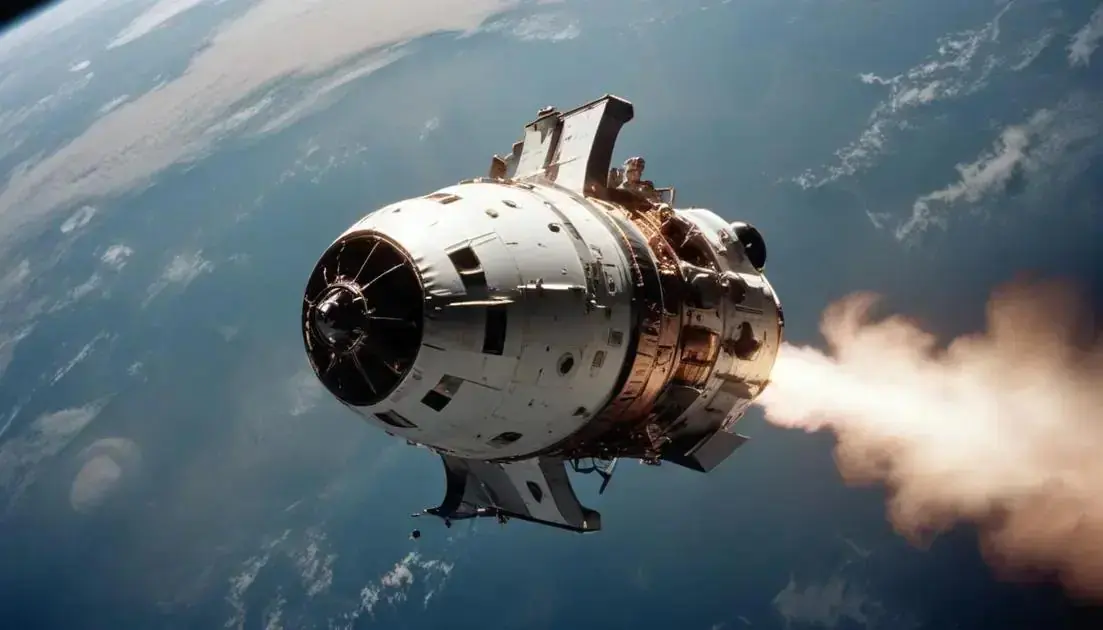
Apollo 11: Man on the Moon and American Victory
Apollo 11 was a groundbreaking mission that marked the first successful manned Moon landing. This historic event, achieved on July 20, 1969, showcased the United States’ technological prowess during the Cold War. Key figures like Neil Armstrong and Buzz Aldrin made history by stepping onto the lunar surface. The mission spurred advancements in technology, inspired future generations, and had a lasting impact on American society, culture, and science education.
Did you know Apollo 11 didn’t just land on the Moon, but it redefined humanity’s limits? Join us as we dive into this iconic event!
The Historical Context of Apollo 11
The Apollo 11 mission didn’t happen in a vacuum. It was a key part of the larger space race during the Cold War. The competition between the United States and the Soviet Union pushed both nations to achieve incredible feats in space exploration.
The Space Race Begins
The space race officially started when the Soviet Union launched Sputnik in 1957. This was the first artificial satellite to orbit Earth. The U.S. felt a strong need to catch up. They invested heavily in science and technology.
Key Events Leading to Apollo 11
In 1961, President John F. Kennedy set a clear goal: to land a man on the Moon by the end of the decade. This ambitious goal sparked many missions aimed at preparing for the Moon landing. Notable missions included Gemini and Apollo 8, which orbited the Moon.
Technological Advances
These early missions helped develop the technology needed for Apollo 11. NASA learned how to safely launch astronauts, perform spacewalks, and navigate through deep space. Each success built the foundation for the historic landing.
Public Interest and Support
The Apollo 11 mission captured the public’s imagination. Many Americans followed the missions closely on TV and in newspapers. This excitement helped gain support for funding and resources, crucial for NASA’s efforts.
As we reflect on Apollo 11, it’s clear how its success was not just about technology but also about the collective effort of a nation striving for a common goal. This mission truly marked a turning point in human history.
Key Figures Involved in the Mission
The Apollo 11 mission was a huge team effort, featuring many key figures. Each played an important role in making the lunar landing a reality.
Neil Armstrong
Neil Armstrong was the mission commander. He became the first human to set foot on the Moon. His famous words, “That’s one small step for man, one giant leap for mankind,” echo worldwide.
Buzz Aldrin
Buzz Aldrin was the lunar module pilot. He followed Armstrong onto the Moon and contributed significantly to the success of the mission. Aldrin’s work during the Moonwalk provided valuable data.
Michael Collins
Michael Collins was the command module pilot. He orbited the Moon while Armstrong and Aldrin explored its surface. Collins played a crucial role in keeping the mission safe and on track.
Mission Control Team
The Mission Control team at NASA was vital for communication and coordination. Engineers and scientists worked tirelessly to ensure everything went smoothly. Their support kept the astronauts safe during the mission.
Many other individuals, like technicians and support staff, also made Apollo 11 possible. This mission showed what teamwork and determination can achieve in space exploration.
The Technology Behind the Lunar Module
The Lunar Module was a key part of the Apollo 11 mission. This spacecraft was designed for landing on the Moon and returning safely to the Command Module. Let’s explore the amazing technology that made it all possible.
Design and Structure
The Lunar Module had two main parts: the ascent stage and the descent stage. The descent stage carried the astronauts to the Moon’s surface. The ascent stage was used to lift them back into orbit.
Propulsion System
The Lunar Module used powerful rocket engines for takeoff and landing. These engines allowed for precise control when landing on the Moon’s uneven surface. The engineers focused on making them reliable and efficient.
Navigation and Control
Navigation was crucial during the mission. The Lunar Module had a computer that helped guide it to the landing site. Astronauts also used manual controls in case they needed to take over.
Life Support Systems
The Lunar Module provided essential life support. This included oxygen for breathing and systems to remove carbon dioxide. It ensured the astronauts stayed safe and healthy during their time on the Moon.
The technology behind the Lunar Module combined innovation and teamwork. It showcased how human ingenuity can push boundaries in space exploration.
The Impact on American Society
The Apollo 11 mission had a huge impact on American society. Its success inspired a sense of pride and unity in a time of change.
Scientific Advancements
The mission led to many scientific advancements. It pushed technology forward in areas like computers and materials science. These developments helped everyday life too.
Inspiration for Future Generations
Apollo 11 sparked interest in science and engineering among young people. Many kids who watched the Moon landing dreamed of becoming scientists or astronauts. This mission planted the seeds for future innovation.
Cultural Shifts
The mission also changed how Americans viewed space exploration. It transformed dreams of the future into real possibilities. The success created a shared vision for exploring beyond Earth.
Political and Economic Effects
Politically, Apollo 11 strengthened America’s position in the world. The U.S. proved its capabilities during the Cold War. Economically, it generated jobs and boosted industries involved in space technology.
Overall, Apollo 11 left a lasting legacy. It continues to inspire and impact various aspects of American life today.
Legacy of Apollo 11
The legacy of Apollo 11 is profound and far-reaching. This mission set the stage for future space exploration and inspired many.
Advancements in Space Technology
Apollo 11 led to significant advancements in technology. The techniques developed for the Moon landing are still used today in various fields. From satellites to robotics, the impact is clear.
Inspiring Space Programs Worldwide
This mission motivated not just Americans but people all around the globe. It encouraged countries to start their own space programs. Nations began to see the value in exploring beyond Earth.
Education and Research
Apollo 11 promoted science education. Schools began focusing more on STEM subjects. Students were encouraged to pursue careers in science, technology, engineering, and math.
Cultural Influence
In popular culture, Apollo 11 remains a symbol of human achievement. Movies, books, and documentaries continue to tell its story. It reminds us of what we can accomplish when we work together toward a common goal.
The legacy of Apollo 11 reminds us of the endless possibilities that await in space. It fuels our curiosity to explore further into the universe.
Conclusion
In conclusion, the Apollo 11 mission remains a landmark achievement in human history. It not only fulfilled a national goal but also set new standards for what we can accomplish in space. The advancements in technology and the inspiration it provided continue to influence generations.
The mission taught us the importance of teamwork and determination. As we look ahead, the legacy of Apollo 11 reminds us to keep exploring and pushing the boundaries of our knowledge. By learning from the past, we can dream even bigger for the future of space exploration and beyond.


